Serbian Australians
| Total population | |
|---|---|
| Regions with significant populations | |
| Sydney, Melbourne, Perth | |
| Languages | |
| Australian English, Serbian | |
| Religion | |
| Predominantly Eastern Orthodoxy (Serbian Church) | |
| Related ethnic groups | |
| European Australians, Serbian New Zealanders |
Serbian Australians are citizens of Australia who are of Serbian birth or descent. According to the 2011 census, there are 69,544 people in Australia who are of Serbian ancestry. Large Serbian communities and ethnic neighborhoods can be found in Sydney, Melbourne and Perth. There are many Serbian Australians that were born in today's Croatia as well as Bosnia-Herzegovina, due to this they are recorded under those statistics. The Serbian Australians are one of the largest Serb diaspora communities.
History
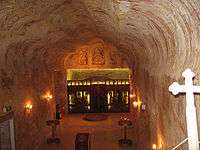
Serbs have migrated to Australia in various waves during the 20th century. A wave of immigrants came during and after the World War II, majority of whom were members of royalist Chetniks movement along with their families. Serbs were a large part of the immigrant community between 1948–55 and most of them opposed the communist regime then in place in Yugoslavia. In 1951 the mostly pro-royalist Serbian communities founded a chapter of the Chicago-based Serbian National Defense Council in Sydney.[3] In 1954 there were 6,118 Yugoslav immigrants in Victoria. Worsening economy in Yugoslavia in the 60s and 70s prompted another wave. Many of those who settled in Victoria had worked in Western Europe (i.e. Germany) prior to coming. The 1961–1971 numbers increase to 49,755 people. After the Yugoslav Wars that broke the federal state of Yugoslavia, Serbia and Montenegro (Federal Republic of Yugoslavia) succeeded as a federal union. Josip Broz Tito's regime of what was then Yugoslavia and the recent wave since 1980 by the breakup of Yugoslavia followed by the Bosnian War of the 1990s.[4]
Demographics
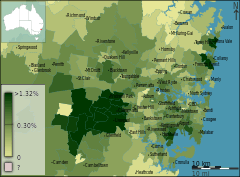
69,544 (2011) Serbian ancestry [5] 55,114 (0.3%) English and Serbian-speakers (2011 census[5]); 9,857 only Serbian-speakers;[5] the 2006 census recorded 95,362 people of Serbian ancestry.[5] There are many Serbian Australians who were born in Today's Croatia and Bosnia-Herzegovina who in turn fall under those respected statistics.
Estimations of the total number of ethnic Serbs (including by ancestry) vary between over 100,000,[6] c. 350,000.[7]
Notable people
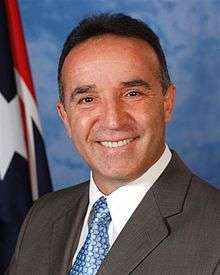 | .jpg) |  |  | 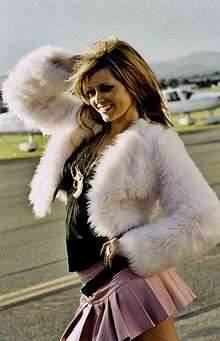 |  | .jpg) | 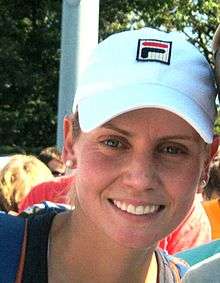 |
- Frank Arok – former soccer player and manager
- Milan Blagojevic – Australian national team soccer player
- Pedj Bojic – soccer player
- Milos Degenek – football player
- Bobby Despotovski – Australian national team soccer player
- Jelena Dokić – Tennis player
- Ivan Ergić – Serbian national team soccer player
- Tom Rogic – Australian national team soccer player and Celtic FC player
- Vedrana Grbovic – model
- Milan Ivanović – Australian national team soccer player
- Marko Jesic – soccer player
- Robert Jovicic – Immigration case
- Sam Kekovich – Media personality and sports commentator
- Aleks Marić – Australian national team basketball player
- Steven Marković – basketball player
- Zdravko Micevic – boxer
- Jim Milisavljevic – soccer player
- Danny Milosevic – soccer player
- Dragan Durdevic – former Rugby League player
- Jake Trbojevic Rugby league player
- Nik Mrdja – Australian national team soccer player
- Ralé Rašić – Order of Australia awarded media personality and former soccer player and Australia national team manager and administrator
- Dirty South – DJ, remixer and record producer
- Nikola Roganovic – soccer player
- Karl Stefanovic – TV presenter
- Vuko Tomasevic – soccer player
- Holly Valance (born Holly Vukadinović) – Singer, actress and model
- Olympia Valance – model and actress, Holly's half-sister
- Dragan Vasiljković – Best known as the founder and Captain of the Serbian paramilitary unit Knindže, but he was also worldwide weapons instructor, businessman and golf instructor
- Lazar Vidovic – retired Australian rules footballer
- Nick Vujicic – Accounting and Financial Planning graduate best known as preacher and motivational speaker.
- Danny Vukovic – Soccer player
- Sreten Božić aka B. Wongar – writer, author
- Ursula Yovich – actress and singer
- Lew Zivanovic – Rugby league player
- Valentina Novakovic – fictional
- Bojana Novakovic – actress
- Andrew Nikolic (born 1961), Australian former politician and retired senior Army officer
- Eli Babalj (born 1992), Bosnian-born Australian football player.
- Monika Radulovic (born 1990), Australian model, Miss Universe Australia 2015. Bosnian Serb parentage.[8]
- Vedrana Grbović, Serbian-born Australian model, Miss World Serbia 2006.[9]
- Andreja Pejic, Bosnian-born Australian transsexual model. Serb mother.[10]
- Nik Cubrilovic, Australian hacker and internet security expert.[11]
- Biljana Dekic, WIM represented Australia in 12 Women's Chess Olympiads
See also
| Part of a series of articles on |
| Serbs |
|---|
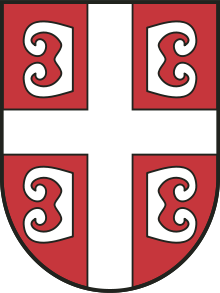 |
|
Native communities |
|
Related people |
References
- ↑ "Fact sheet – Ancestry – Serbian". Abs.gov.au. 2012-08-16. Retrieved 2016-01-04.
- ↑ "Australian Government Department of Immigration and Border Protection" (PDF). Immi.gov.au. Retrieved 2016-01-04.
- ↑ Stefanovic, D.S. (2002). "Serbs". In James Jupp. The Australian People: An Encyclopedia of the Nation, its People and their Origins. Cambridge: Cambridge University Press. p. 678. ISBN 978-0-521-80789-0.
- ↑ "Origins: History of immigration from Serbia – Immigration Museum, Melbourne Australia". Museumvictoria.com.au. Retrieved 2016-01-04.
- 1 2 3 4 "The People of Australia – Statistics from the 2011 Census" (PDF). Department of Immigration and Border Protection. 2014: 59. ISBN 978-1-920996-23-9.
Ancestry
- ↑ "Manje Srba u Australiji?". Srpska Dijaspora. 2011. Retrieved 2016-01-04.
- ↑ Palić, Svetlana (17 July 2011). "Četiri miliona Srba našlo uhlebljenje u inostranstvu". Blic. Retrieved 2016-01-04.
Australiji (130.000)
- ↑ "Srpkinja sa titulom Mis Australije: Upoznajte Moniku Radulović". Cosmopolitan.
- ↑ "Bivša Miss Srbije Vedrana Grbović: Đoković me nasmejao do suza!". Svet.
- ↑ "Naš Andrej je lep ko lutka!" [Our Andrej Is Beautiful Like a Doll!]. Alo! (in Serbian). 31 December 2011. Archived from the original on 9 January 2012. Retrieved 31 December 2011.
- ↑ "One Serb's Crusade Against his Privacy Being Invaded by Facebook". Britić.
